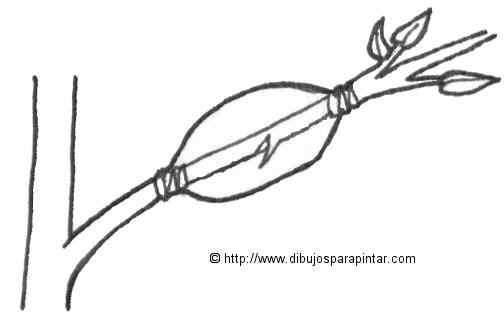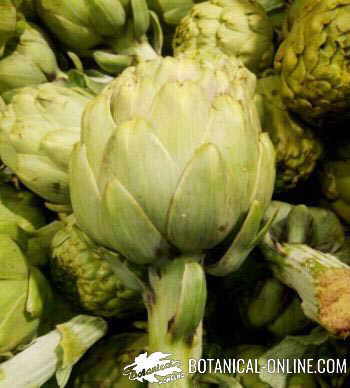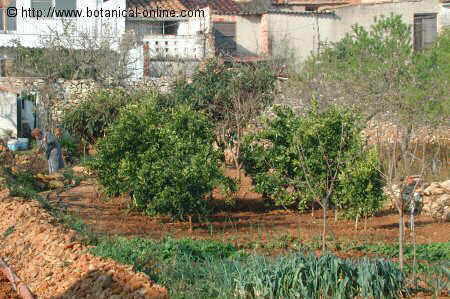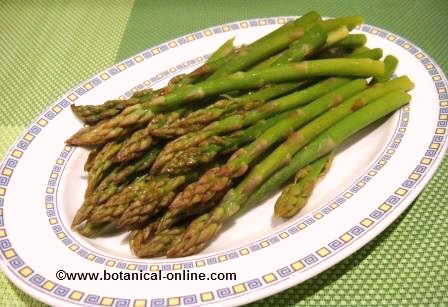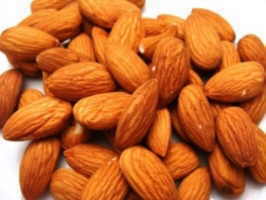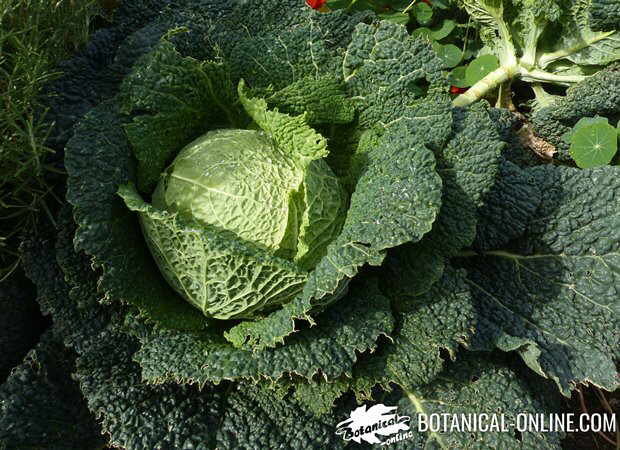Contents
- 1 How to care for succulent or succulent plants
- 1.1 Cultivation of succulent or succulent plants
- 1.2 Environment and exposure in succulent plants
- 1.3 Do all succulent plants grow in warm places?
- 1.4 Succulent plants that resist the cold
- 1.5 Where should succulents be placed?
- 1.6 Tips before exposing a plant to full sun
- 1.7 Pots, containers or other means of support for succulent plants
- 1.8 Is a deep container necessary?
- 1.9 Draining the succulent pot
- 1.10 Planting succulents on stones
How to care for succulent or succulent plants
Cultivation of succulent or succulent plants
Succulent plants, also called succulents, are those that have developed thick or fleshy stems or leaves to store water. Among the most popular succulent crops are cacti, but there are other plants that are not cacti and that also have succulence as a mechanism of adaptation to dry climates, or to lands with little capacity to retain water.
In the following guide you will find all the information regarding the cultivation of succulent plants: Is it necessary to plant them in a very deep pot? Where is it better to locate these plants? These and more doubts, resolved below.
Environment and exposure in succulent plants
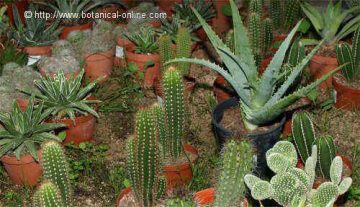
Succulent plants come from most hot or hot places, dry and with little environmental humidity, so, in general, they need to grow up in places where it is very cold, where the environmental humidity is not too high and where rainfall does not abound too much.
In temperate climates, it is advisable to enter the plants of the terrace inside the home or cover them with a plastic to prevent them from freezing during the winter.
Do all succulent plants grow in warm places?
In general most succulents grow in warm places. We have an exception to this general rule in certain succulent plants that grow in high places and whose organism is adapted to the great changes in temperature between day and night.
Succulent plants that resist the cold
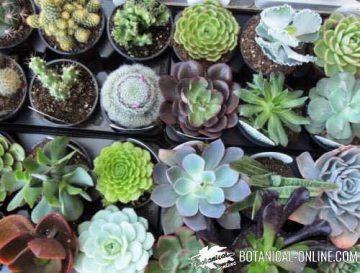
Many of these plants have already acquired certain adaptations, such as the old man cactus of the Andes (Oreocereus celsianus) which is covered with a strong white hairiness that protects it from the strong radiation of the sun during the day and from the cold at night. This allows it to resist down to -12 ºC.
Many high mountain plants, such as the cobweb house-leek (Sempervivum arachnoideum), always have characteristics that make them distinguishable as succulents from cold areas. The cobweb house-leek always survives is so named because it has developed a kind of cobweb on the succulent leaves of its basal rosette formed by a tangle of hairs that protects it from the harshness of the alpine zone where it grows.
Where should succulents be placed?
Succulent plants generally need sunny exposure, although they adapt to semi-shade. In the latter case, their appearance usually changes with respect to those grown in the sun. When the plant is in full sun, it becomes greener and more elongated. In this case it is dangerous to place a specimen that has been bred in half shade in full sun due to the possibility of it burning.
Tips before exposing a plant to full sun
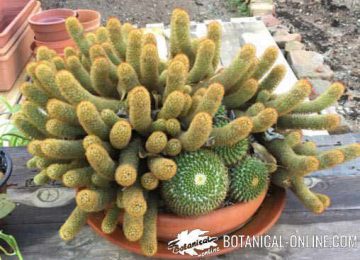
Some succulent plants, such as kalanchoes or cacti, grown indoors that have been exposed to direct sunlight, develop burns in the form of brown spots. Given this, it is better to adapt the plant to solar radiation, placing it for a while in the morning directly in the sun for a few days. When its color has changed from light green to a darker green, it is ready to be placed in full sun.
This precaution should be taken into account when buying a new plant, as they are not normally exposed to the sun in gardening.
Pots, containers or other means of support for succulent plants
Succulents can be planted directly in the ground, in containers, or in pots. Regarding the pots or containers, we can use the clay ones or the plastic ones. The plastic ones have the advantage that they weigh less so they are easier to handle and could be more suitable for terraces or balconies by not increasing the weight on them too much.
Keep in mind that they retain less water than mud, which is not an inconvenience in the case of this type of plants.
Is a deep container necessary?
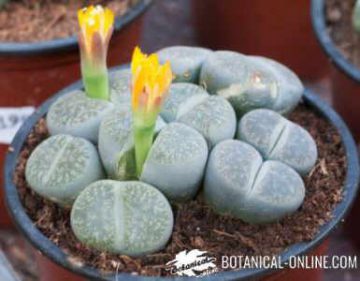
Many succulents, like most cacti, have shallow roots and do not like having too much free ground in the pot, so it is advisable to buy containers specially adapted for this type of plant. These containers are not as tall as those used by plants in general and many succulent plants feel more comfortable in them.
The fact that there is a lot of space available at the end of the pot can also promote water accumulation and cause rot.
Other succulents have tuberous roots and need wider, deeper containers to grow. In this case, you can use conventional pots.
Draining the succulent pot
Regardless of the type of pots used, it is advisable to fill the bottom of the pot with a drainage material, such as bits of brick or coarse gravel and try to leave the drain hole free so that the specimen has good drainage.
Planting succulents on stones
Some succulents grow very well on the cracks or holes in calcareous stones. In this case, you can choose a stone of this type and fill some cracks with soil for succulents and plant the specimen on them. A crack can be increased or a larger hole can be made with the help of a scarp or drill.
Likewise, some succulents grow well on volcanic rocks, such as mammiliaries. You can find some rock of this type and plant them on them. This set is very attractive and natural since it imitates the environment where these plants grow.
Other succulents have hanging habitats, such as Aptenia (Aptenia cordifolia) or Burrito (Sedum morganianum). In this case it can be very convenient to use hanging baskets to let the branches hang from it.
![]() More information on succulent plants
More information on succulent plants


